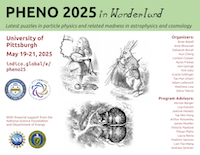Speaker
Description
Neutrinos produced by interactions between ultra-high-energy (UHE) cosmic rays and the cosmic microwave background can help trace the origins of these particles and investigate the mechanisms driving their extreme acceleration.
The detection of neutrinos above the PeV scale requires instruments capable of monitoring several cubic kilometers of dense material, as the neutrino flux drops sharply at these energies. This has led to the development of new detection techniques searching for Askaryan radiation — coherent radio pulses produced by neutrino induced particle showers that can propagate over kilometer-scale distances through dielectric media.
The Radio Neutrino Observatory in Greenland (RNO-G) is a particle detector utilizing a sparse array of antennas embedded within the glacier ice. In addition to detecting Askaryan radiation from neutrinos, RNO-G is also sensitive to radio emissions generated by cosmic ray interactions, which present a challenging background to isolate. However, the detection of cosmic rays would mark the first observation of Askaryan radiation in natural ice and serve as validation of the detection technique. This talk will discuss the progress made in identifying cosmic ray signatures within the RNO-G dataset.

